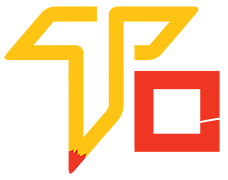Who this 2D animation course is for?
The 2D animation course is designed for individuals interested in learning the art and techniques of creating 2D animations. It caters to a diverse audience with varying skill levels and goals. Here are some specific groups of people who might benefit from the course: Beginners, Artists and Illustrator, Designers and Creatives, Students and Hobbyists, Content Creators, Game Developers, Professionals in related fields.
Why take this 2D animation course?
There are several compelling reasons to take a 2D animation course:
- Creative Expression: Animation is a powerful medium for creative expression. Learning 2D animation allows you to bring your ideas to life, tell stories, and convey emotions through moving images.
- In-Demand Skill: Animation is widely used in various industries, including entertainment, advertising, gaming, education, and more. Having animation skills can make you a valuable asset in the job market.
- Career Opportunities: If you aspire to work in the animation industry as an animator, storyboard artist, character designer, or in related roles, taking a 2D animation course is an essential step towards building your career.
- Enhanced Artistic Skills: Animation requires a solid understanding of drawing, timing, and movement. By learning 2D animation, your overall artistic abilities and attention to detail can improve significantly.
- Versatility: 2D animation skills can be applied to various projects, from creating animated shorts, explainer videos, and advertisements to adding animations to your web design or social media content.
- Personal Projects: Whether you want to create animations for personal projects, such as short films or animated stories, or for sharing content on social media platforms, this course equips you with the necessary skills.
- Collaboration Potential: If you collaborate with other artists, designers, or developers, understanding 2D animation allows you to contribute to projects that involve animated elements.
- Understanding Animation Principles: Animation involves various principles, such as squash and stretch, anticipation, timing, and easing. Learning these principles can help you appreciate and analyze animated works better.
- Technical Proficiency: Animation often requires the use of specialized software. A 2D animation course will teach you how to navigate animation tools and software effectively.
- Continuous Learning: The animation field is continuously evolving with new techniques and technologies. Taking a course helps you stay updated with industry trends and advances.
- Portfolio Building: If you’re pursuing a career in animation or a related field, the work you create during the course can be added to your portfolio, showcasing your skills to potential employers or clients.
What you will learn in 2D animation?
Here are some common aspects that you can expect to learn in a 2D animation course:
- Animation Principles: Understanding the foundational principles of animation is essential. These principles include squash and stretch, anticipation, timing, exaggeration, follow-through, and more. They form the basis of creating believable and visually appealing animations.
- Drawing Fundamentals: A solid grasp of drawing basics is crucial for 2D animation. You’ll learn about anatomy, perspective, character design, and how to create expressive and appealing characters.
- Storyboarding: Storyboarding involves creating a visual sequence of scenes, much like a comic book, to plan the flow and narrative of an animation. You’ll learn how to storyboard effectively to plan out your animations.
- Frame-by-Frame Animation: Traditional hand-drawn animation involves creating each frame individually. You’ll learn techniques to animate characters and objects frame-by-frame, bringing them to life on the screen.
- Digital Animation Tools: Many 2D animations are created using digital software. You’ll be introduced to popular animation software such as Adobe Animate, Toon Boom Harmony, or other digital drawing tools.
- Animating Characters and Objects: You’ll learn how to animate characters and objects to give them movement, personality, and expressions.
- Timing and Pacing: Proper timing and pacing are crucial in animation. You’ll learn how to control the speed of movements to convey emotions and create the desired impact.
- Special Effects: Adding various special effects like explosions, smoke, or magic can enhance your animations. You’ll learn how to create these effects convincingly.
- Lip Syncing: For animations involving characters speaking, lip-syncing is vital. You’ll learn how to synchronize the character’s mouth movements with the dialogue.
- Animating Backgrounds: Backgrounds play a significant role in setting the scene for an animation. You’ll learn how to animate backgrounds effectively to complement the characters and actions.
- Animation Production Pipeline: Understanding the workflow of an animation production pipeline will give you insights into the industry’s standard practices and collaborative processes.
- Project Management: Larger animation projects often require effective project management skills, including setting deadlines, budgeting, and working as part of a team.
SALARY & PACKAGES
Junior 2D Animator
Starting salary: ₹2.5 lakh to ₹5 lakh per annum
Mid-Level 2D Animator
Salary: ₹5 lakh to ₹10 lakh per annum
Senior 2D Animator
Salary: ₹10 lakh to ₹20+ lakh per annum
JOBS & PROFILES
There are many job profiles are avaliable in varanasi & all over India. Such Job Profiles name is – 2D Animator, Senior 2D Animator, Rigging Artist, Lead 2D Animator, Background Artist, Layout Artist, etc.

Charges & duration of 2D animation
Duration : 6 month
Charges : 6,000/-
2D animation course syllabus details
- Understanding the principles of design: line, shape, color, texture, and form.
- Overview of composition and visual communication.
- Introduction to relevant software and tools (Adobe Illustrator, Inkscape, etc.).
- In-depth study of design elements: lines, shapes, and colors.
- Exploration of the relationship between various elements.
- Exercises and projects to apply the learned concepts.
- Understanding visual hierarchy and balance.
- Grid systems and their role in layout design.
- Typography and its impact on 2D designs
- The psychology of colors in design.
- Color harmonies and color schemes.
- Applying color in design projects.
- Introduction to raster graphics and image editing tools (Adobe Photoshop, GIMP, etc.).
- Basic image manipulation techniques.
- Integrating images into 2D designs.
- Introduction to vector graphics and illustration software (Adobe Illustrator, Inkscape, etc.).
- Creating scalable and resolution-independent artwork.
- Illustration techniques and styles.
- The art of creating icons and symbols.
- Using icons effectively in user interfaces and designs.
- Designing visually memorable symbols.
- Basics of branding and its importance in 2D design.
- Creating logos and visual identity systems.
- Case studies of successful branding projects.
- Understanding the differences between print and digital design.
- Preparing files for various print formats (flyers, posters, etc.).
- Design considerations for websites and social media.
- Curating and presenting a professional design portfolio.
- Tips for showcasing projects effectively.
- Preparing for interviews and job applications (if the course is career-oriented).
Related- 3D animation
